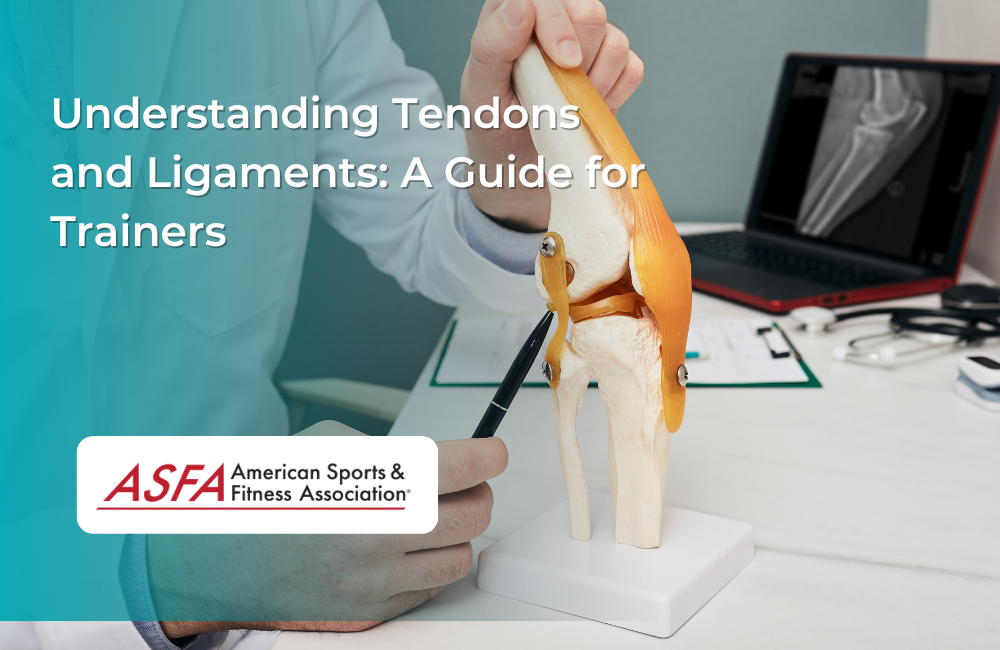Tendons and ligaments are two types of connective tissue that allow for movement in the body. The major ligaments are the anterior and posterior cruciate ligaments (ACL and PCL) and the medial and lateral collateral ligaments (MCL and LCL). Tendons connect muscle to bone, allowing for muscle movement. Connective tissue is made up of collagen, elastin, reticular fibers, and ground substance. Tendons and ligaments are not able to heal on their own; they require treatment from a medical professional with experience treating these injuries in order to return to activity safely.
The major ligaments are the anterior and posterior cruciate ligaments (ACL and PCL) and the medial and lateral collateral ligaments (MCL and LCL).
The major ligaments are the anterior and posterior cruciate ligaments (ACL and PCL), medial collateral ligament (MCL), lateral collateral ligament (LCL), and posterior oblique popliteal tendon.
The ACL is a strong band of tissue that connects your femur bone to your tibia bone in front of your knee joint. The PCL is another strong band of tissue that connects your femur bone to your tibia bone behind your knee joint. Both of these structures help prevent excessive movement between these bones when you bend or straighten out your leg at the knee during activities such as walking upstairs or jogging down streets filled with traffic lights flashing red due to rush hour traffic jams caused by commuters trying desperately not miss their trains home after work on Friday nights but instead finding themselves stuck in traffic jams caused by other commuters trying desperately not miss their trains home after work on Friday nights...
Tendons connect muscle to bone, allowing for muscle movement.
Tendons connect muscle to bone, allowing for muscle movement. They are made of a type of connective tissue called collagen and are strong and flexible. Tendons attach muscles to bones in order to move them during exercise or everyday tasks like walking or lifting groceries.
Tendons also have limited blood flow, which means they're not able to heal on their own; therefore, injuries can take longer than other types of injuries (like sprains) to recover from because they require physical therapy rather than just rest until the pain goes away on its own.
When you strain a tendon, you may experience symptoms such as swelling around your joint where the injury occurred (e.g., ankle), difficulty walking due to pain when putting weight on that leg/foot/ankle area after an activity involving jumping up high off one foot at least twice per day - such as landing after doing squats with weights overhead while holding onto something sturdy like a pole behind them!
Connective tissue is made up of collagen, elastin, reticular fibers, and ground substance.
Connective tissue is made up of collagen, elastin, reticular fibers, and ground substance. Collagen is the most abundant protein in the body; it's found in tendons and ligaments as well as bones and cartilage. Elastin helps give these structures their elasticity. Reticular fibers are a network of fibers that form a lattice structure within connective tissue; they hold everything together so that your muscles can move freely without tearing apart or snapping back into place after contracting with force (like when you lift weights). Ground substance is a gel-like material that fills spaces between cells; it provides support to other types of connective tissue like tendons and ligaments as well as helps keep them pliable so they don't become brittle over time due to lack of use!
Tendons and ligaments are not able to heal on their own.
Tendons and ligaments are connective tissue. They provide stability for joints, help keep the muscles aligned properly when they move, and connect muscles to bones.
Tendons connect muscle to bone while ligaments connect bones together in different ways depending on where they are located in your body. Tendons are found everywhere in the body except for your skull, eyelids, and lips; ligaments can be found anywhere there is cartilage (which includes most places). Tendons can tear or rupture if overused or overexerted; this usually happens during physical activity such as running or weightlifting where repetitive stress is placed on them repeatedly over time until eventually one day something snaps--or pops--and now you have a torn tendon!
Trainers can help people who have injured their tendons or ligaments by encouraging them to stay moving gradually as they recover from a tear or rupture.
It's important to understand how tendons and ligaments heal so that you can help your clients recover from injury. Tendons are connective tissues that attach muscle to bone. Tendinitis occurs when there is inflammation in the tendon itself or in its surrounding tissue (the tenoperiosteum). This can be caused by overuse, repetitive motions, poor form during exercise, or sports activities that put excessive stress on the tendon (such as running).
Ligaments are strong bands of fibrous tissue that connect bones together at joints; they prevent dislocation by limiting movement at certain angles to prevent twisting forces from pulling apart soft tissue attachments between bones. Ligament injuries often occur when there has been excessive force placed upon these structures during physical activity such as running downhill or jumping up onto high surfaces like furniture; they may also occur while participating in contact sports like football if an opposing player hits someone hard enough with his/her shoulder pads while tackling him/her down onto the ground causing severe trauma resulting in tearing/rupturing
Conclusion
Tendons and ligaments are important for the stability of joints, but they can be easily injured. It's important for trainers to understand how these connective tissues work so that they can help their clients recover from an injury and get back into the gym as soon as possible.





